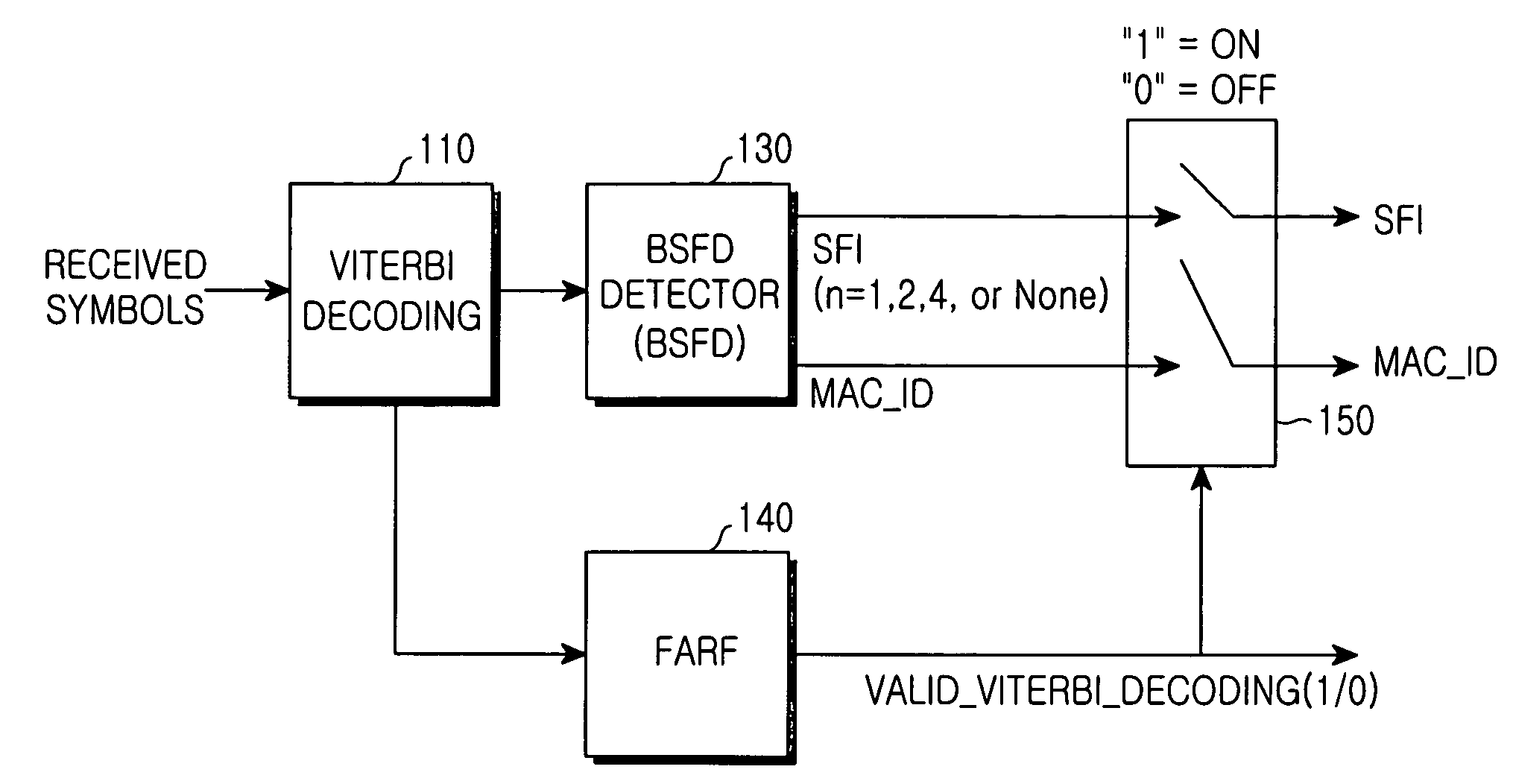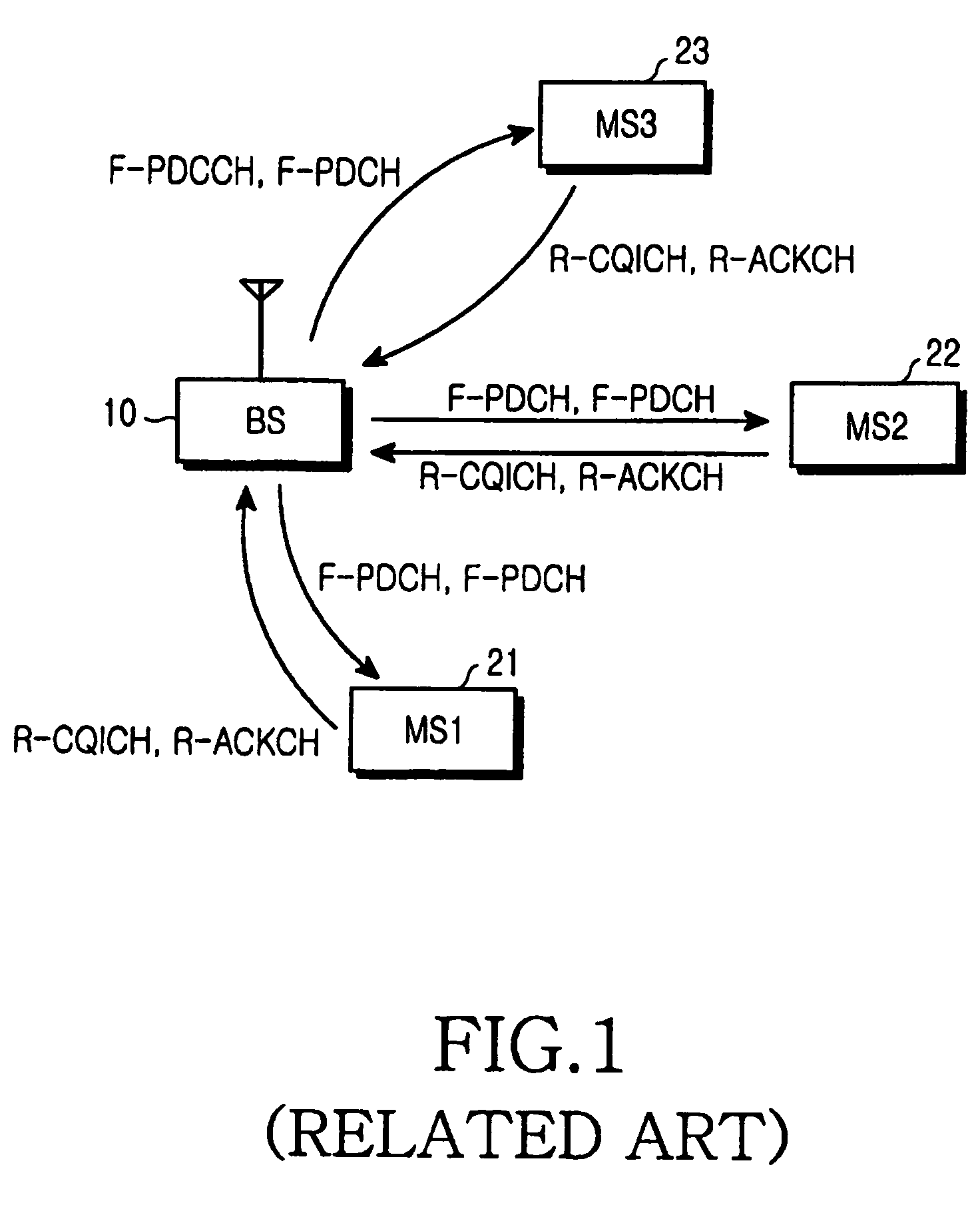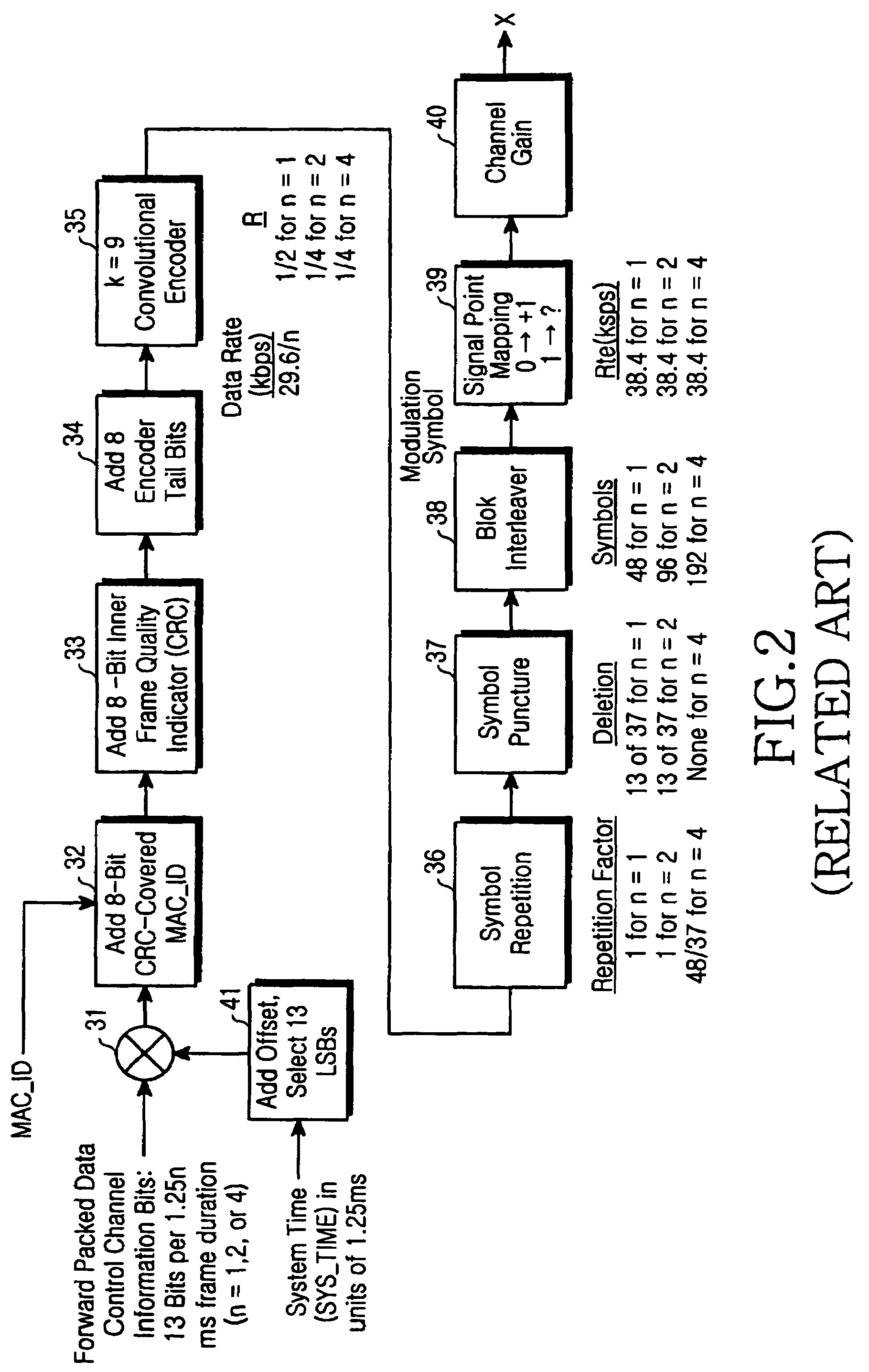Apparatus and method for receiving a forward packet data control channel in a mobile communication system supporting packet data service
a mobile communication system and control channel technology, applied in data switching networks, coding, amplitude demodulation, etc., can solve problems such as failure to decode f-pdch, mobile stations may possibly make errors, and most f-pdchs suffer from decoding errors. to achieve the effect of reducing alarms
- Summary
- Abstract
- Description
- Claims
- Application Information
AI Technical Summary
Benefits of technology
Problems solved by technology
Method used
Image
Examples
Embodiment Construction
[0049]An embodiment of the present invention will now be described in detail with reference to the accompanying drawings. In the following description, a detailed description of known functions and configurations incorporated herein has been omitted for conciseness.
[0050]The present invention relates to physical channels used in Code Division Multiple Access 2000 (CDMA2000) 1x Rev.C, a synchronous CDMA mobile communication system (hereinafter referred to as First Evolution-Data and Voice (1x EV-DV)). It should be noted that the embodiment of the present invention is not restricted only to CDMA2000 1x REV.C, but can be applied to transmission control channels used in High Speed Downlink Packet Access (HSDPA) for asynchronous Wideband CDMA (WCDMA). Further, the embodiment of the present invention uses supplementary slot format decision information in addition to the exiting factors. The embodiment of the present invention improves performance of Blind Slot Format Detection (BSFD) usin...
PUM
 Login to View More
Login to View More Abstract
Description
Claims
Application Information
 Login to View More
Login to View More - R&D
- Intellectual Property
- Life Sciences
- Materials
- Tech Scout
- Unparalleled Data Quality
- Higher Quality Content
- 60% Fewer Hallucinations
Browse by: Latest US Patents, China's latest patents, Technical Efficacy Thesaurus, Application Domain, Technology Topic, Popular Technical Reports.
© 2025 PatSnap. All rights reserved.Legal|Privacy policy|Modern Slavery Act Transparency Statement|Sitemap|About US| Contact US: help@patsnap.com



